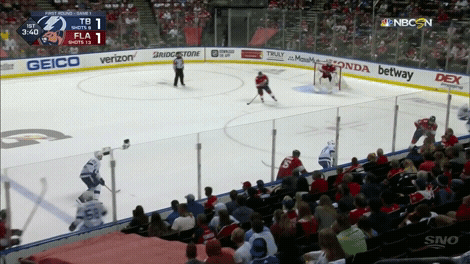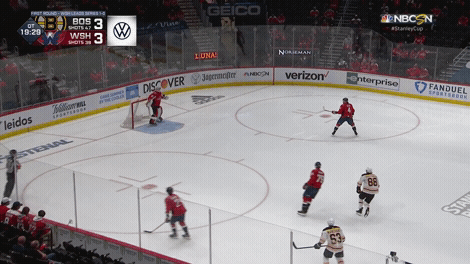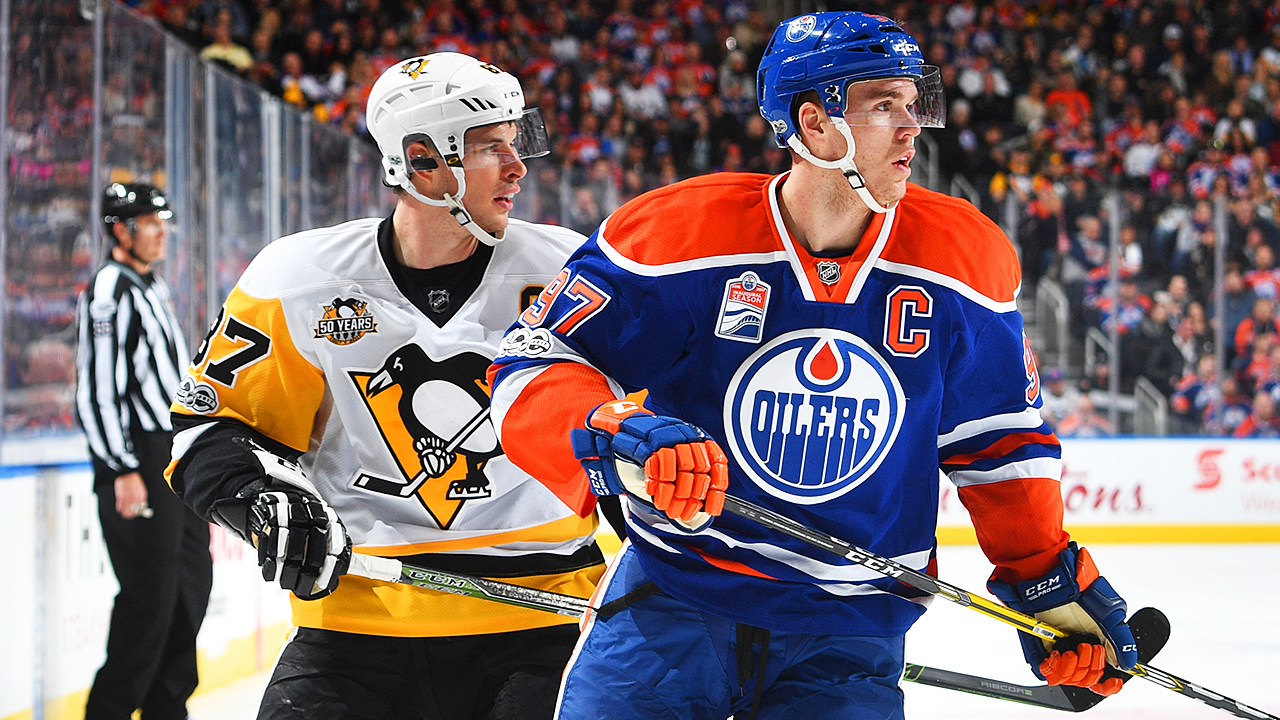
During last summer’s play-in series versus Columbus, I wrote a number of articles about how things were going for the Toronto Maple Leafs, and by the time we got to the fifth game a theme had emerged.
The Leafs were controlling possession, but in a way that worked for the Blue Jackets. Toronto was stuck outside along the paint and couldn’t get to the inside, as I wrote about in this piece saying they needed better short support.
From an offensive standpoint, having the puck in the offensive zone along the paint is fine, as long as it’s in service of the end goal: getting the puck to the net for a scoring chance. (I have vivid memories of growing up in the era of “cycle hockey,” and being taught to just keep bumping the puck back and skating in circles and my 10-year-old brain just being like … “What in all the hell are we trying to accomplish here?”)
This is what the Islanders want you to do. They’re not going to quibble with you having the puck, so long as they can keep you out on the perimeter. You’re welcome to shoot it from out there too, as the new motto of “If our goalie can’t stop shots from out there, we’ll find one who can” has led to a league full of goalies who can.
It’s why I wrote about the Leafs and short support — it’s one of the few ways inside that isn’t “physically overpower the opposing humans in your way,” which I didn’t believe at the time was an option for that Leafs group.
This leads me to a greater point about something to watch for in the playoffs in general, but most specifically with the Leafs: one of the most important ways to get to the inside when the hockey gets harder is by getting off the wall (as noted in this tweet by Jack Han), which isn’t as easy as it sounds.
Han’s tweet used a great example of that. Florida’s Carter Verhaeghe was in a foot race for a loose puck heading just inside Tampa’s zone, which he was going to be able to get to and get a stick on. The easy — oh-so-easy — play there is also one that would get you a pat on the back from your coaches. You beat the guy to the puck, chip it past him in deep, and proceed on the forecheck. You would’ve got the puck going the right way.
But Verhaeghe showed poise and hung on to it, pulled it off the wall, and switched sides with it.

That makes the return-to-zone coverage a little harder for Tampa’s defence, as they’ve been stretched side to side, coverages are still being sorted out, and it results in a one-timer slap-bomb from dead in the upper slot.
There aren’t many bump-bump-bump cycle plays that end in clean slot one-timers, and those that do usually involve ambien-tinged decision-making from dozy defenders.
In Washington, the Boston Bruins evened up their series on a slightly murkier version of this same play, but a version of it nonetheless.
When this puck goes from Washington’s possession to Boston’s, David Krejci could easily have put it back in deep and call it a win. There are two Capitals skating towards him after all, and it’s a possession high in the O-zone — that smells like dangerous turnover territory for most forwards. Putting it back deep would’ve stopped Washington’s breakout, avoided that turnover, kept it in the O-zone for longer, and brought him a quality outcome: here’s your pat on the back good shift boys.
But Krejci uses one of his finest attributes, his brain, hangs on to it to see how the defence adjusts (note: players skating at you aren’t always coming to get you, so much as they’re trying to force you to move it quicker than you’d like), and gets the puck off the wall, moving it side to side.

The Caps get stretched out, have to communicate coverage, and have a momentary lapse.
Sometimes that’s all it takes.
That brings me to one of my favourite hockey terms that only I seem to use, which is “offensive prodding.” Basically, I think every time a player has the puck in the O-zone, they should at least show that they’re willing to take it to the net or to pass it to the middle, more or less asking a question and making the opposing defence answer. I’m coming in, are you prepared to stop me? If they aren’t then, yes, that player should take it to the net. If the defence is ready to cut that player off, then one of them has had to draw away from somewhere else in coverage, and a passing lane should’ve opened up.
You prod the defence to see if they’re prepared to defend, and if they are, you’ve made them move. Look in, show in, you should be constantly heading in. A talented team doing that over seven games is gonna score. We always hear about good defensive teams and how they “stay in their structure” so well. Offensive prodding at least makes them change this shape a little, which means ice has to open up elsewhere.
To bring it back to the Leafs and Habs, Montreal has their work cut out for them because the Leafs get in. No team in the NHL had more 5-on-5 scoring chances this season than the Toronto Maple Leafs, full stop. No team had more high danger scoring chances either. They weren’t tops in shot attempts or even shots — in fact, they were just inside the top-10 in those categories. But in terms of raw totals of the good stuff, they led the entire NHL.
The good news for Habs fans is that those totals came in a softer division, and Montreal had the second-most success (behind Edmonton) in limiting Toronto’s chance-generating machine. The Leafs had fewer chances and high danger chances against Montreal than their season averages.
To go with that, a healthy Canadiens team is likely to hit reset and double down on what they believed they were built to be: a defensively stout, deep team that’s designed for the meat grinder of the post-season. The plan would be to dial back those Leafs numbers even further. Montreal wants to win by committee and play as a five-man unit. That means leaning on guys like Brendan Gallagher, Shea Weber, Josh Anderson, Eric Staal, Joel Edmundson, Ben Chiarot, Phillip Danault, and on down the list of veteran guys who don’t play passive hockey.
If they are indeed scratching Cole Caufield and Jesperi Kotkaniemi in Game 1, the Habs are being pretty up front about the path they see forward … which I’ll admit sounds insane to me (you’ve gotta score, too), but we’re not gonna pick through that decision in this piece. That path looks something like the one the Islanders used en route to post-season success in the previous Stanley Cup Playoffs. Just defend, defend, defend the inside, frustrate the opposition, and get your goals when they have their breakdowns.
It’s not an easy path, but it’s a path nonetheless, and it’s incumbent on the Leafs to find a detour. That road to their success will lead not around the outside of the action, but right through the heart, which starts by getting pucks off walls.
If it’s worked for Verhaeghe, and it’s worked for Krejci, there’s no doubt it can work for the Leafs’ skilled forwards, whose choice is now to learn from their own history, or be doomed to repeat it.






